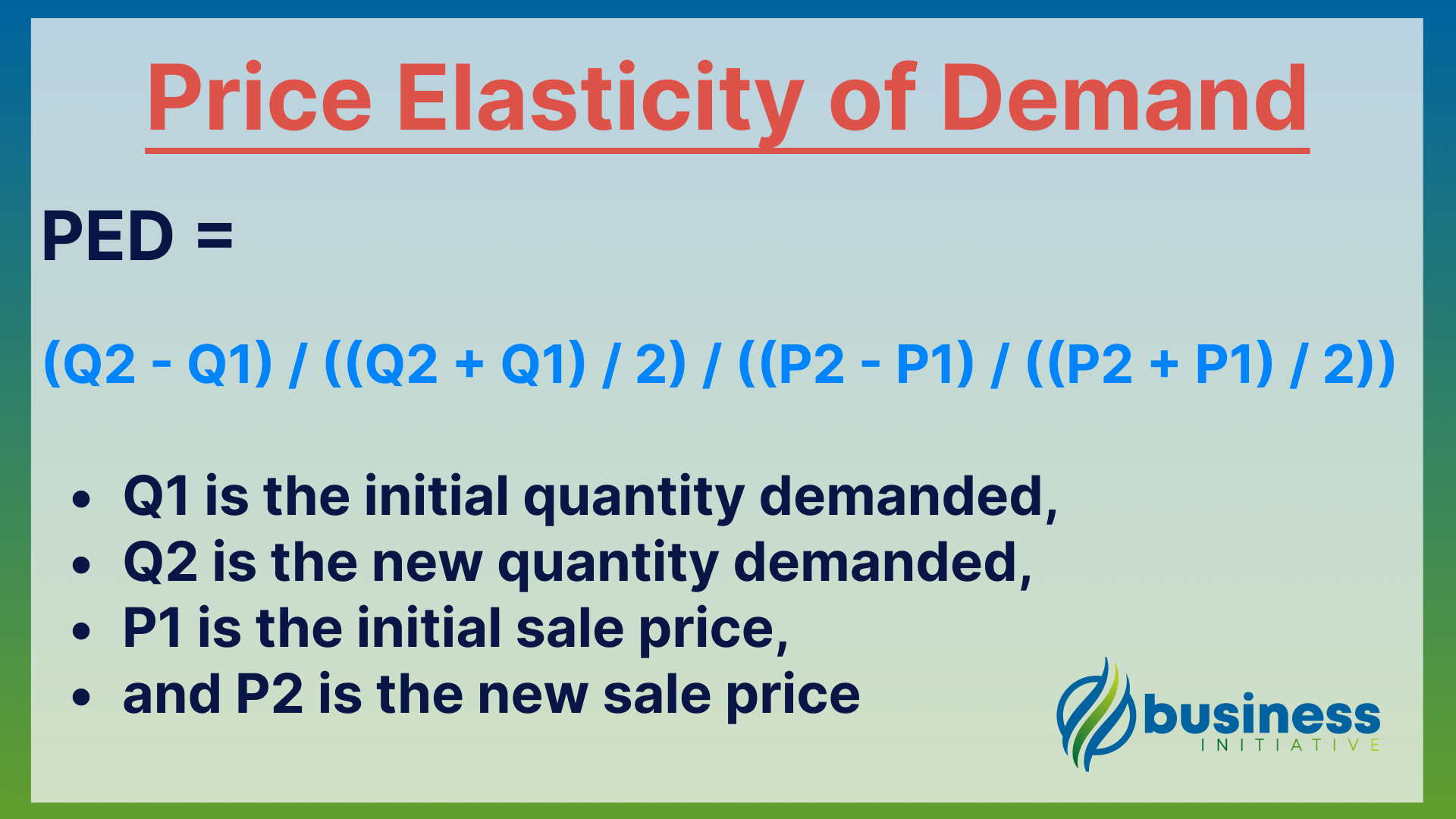Price elasticity of demand is a concept that businesses must understand in order to price their products effectively.
This measure can also be useful for businesses when they are planning their marketing and advertising strategies.
In this article, we will explore the definition of price elasticity of demand and how it can be used to benefit businesses.
Definition of Price Elasticity of Demand
Price elasticity of demand is a measure of how responsive consumers are to changes in the price of a product.
When a product has high price elasticity of demand, it means that a small change in the price of the product will lead to a large change in the quantity demanded by consumers.
When a product has low price elasticity of demand, it means that a change in price will not significantly affect the demand for the product.
Price Elasticity of Demand Calculator
How Price Elasticity of Demand is Useful for Businesses
Understanding price elasticity of demand is important for businesses for a number of reasons.
Firstly, it can help businesses to set the optimal price for their products.
By calculating the price elasticity of demand for a product, a business can determine the level of demand for the product at different price points.
This can help the business to price their products in a way that maximizes profits.
Secondly, price elasticity of demand can be useful for businesses when they are planning their marketing and advertising strategies.
By understanding the level of demand for a product at different price points, a business can determine the level of advertising and marketing that is required to sell the product.
For example, if a product has high price elasticity of demand, it may require more advertising and marketing efforts to sell the product at a higher price point.
When and How to Use Price Elasticity of Demand Effectively
Price elasticity of demand is most effective when it is used in conjunction with other measures of consumer behavior.
For example, a business may also want to consider consumer income levels, consumer preferences, and competitor pricing when they are setting the price for their products.
It is also important for businesses to regularly review the price elasticity of demand for their products.
Consumer behavior can change over time, and so businesses need to ensure that they are staying up-to-date with changes in demand for their products.
In Summary…
Price elasticity of demand is a vital concept for businesses to understand.
By understanding the level of demand for their products at different price points, businesses can set the optimal price for their products and plan their marketing and advertising strategies more effectively.
It is important for businesses to regularly review the price elasticity of demand for their products and to use it in conjunction with other measures of consumer behavior.
FAQs - Frequently Asked Questions About Price Elasticity of Demand

What is price elasticity of demand?
Price elasticity of demand measures how much the quantity demanded changes in response to price changes.
Learn More...
Price elasticity of demand quantifies consumer responsiveness to price changes.
If a product has a high elasticity, a small price increase will result in a significant drop in demand.
Conversely, a low elasticity indicates that price changes have minimal effects on demand.
For instance, luxury goods like designer handbags often have high elasticity, while essential products such as gasoline tend to have low elasticity.
How is price elasticity of demand calculated?
It is calculated using the percentage change in quantity demanded divided by the percentage change in price.
Learn More...
Price elasticity of demand (PED) is calculated using the formula:
PED = (Change in Quantity / Average Quantity) / (Change in Price / Average Price)
This formula provides a numerical value that helps businesses understand the sensitivity of their customers to price changes.
A PED value greater than 1 indicates high sensitivity, while a value below 1 signals inelastic demand.
Why should businesses consider price elasticity of demand when setting prices?
Understanding elasticity helps businesses maximize revenue by pricing their products strategically.
Learn More...
By assessing the elasticity of their products, businesses can better forecast consumer behavior.
For instance, a product with high elasticity should be priced more competitively to avoid losing customers due to price hikes, whereas a product with low elasticity can bear higher prices without significant losses in demand.
This helps companies optimize pricing for profitability and competitiveness.
How does advertising impact price elasticity?
Effective advertising can reduce the elasticity of demand by increasing brand loyalty.
Learn More...
Advertising creates a unique brand image, increasing perceived value and reducing consumers' sensitivity to price changes.
Loyal customers will prioritize specific brands even if prices increase.
For example, Apple products have lower price elasticity due to brand loyalty fostered through consistent advertising and high-quality standards.
What role does income play in price elasticity?
Changes in consumer income levels can alter the elasticity of demand for certain products.
Learn More...
When consumer incomes rise, the demand for luxury goods becomes less sensitive to price changes (lower elasticity), while essential goods remain stable.
In periods of economic downturns, demand for non-essential items with high elasticity drops sharply, reflecting reduced purchasing power.
How can businesses use price elasticity to improve their marketing strategy?
Businesses can tailor promotions and campaigns based on the price sensitivity of their customers.
Learn More...
Understanding which products are highly elastic allows businesses to create more compelling marketing campaigns or discounts to stimulate demand.
For example, a company might use time-sensitive discounts on products with high elasticity to drive immediate purchases, knowing customers respond strongly to price reductions.
How frequently should businesses review price elasticity?
Reviewing it annually or during significant market changes is advisable.
Learn More...
Businesses should periodically assess price elasticity to adapt to changing market conditions, consumer behavior, and economic trends.
For instance, a major competitor entering the market or significant economic shifts could significantly alter consumer demand, requiring a fresh analysis of price sensitivity.


